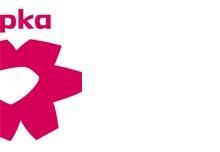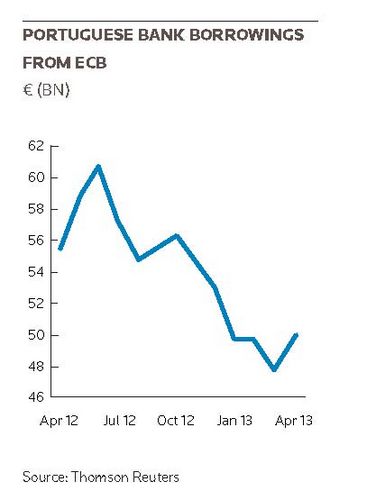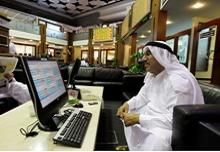IFR: Issuance in non-core currencies was again dominated by sovereign, supranational and agency borrowers over the course of the last year. Will this continue or will more banks look to get involved?
Sjaak-Jan Baars, Rabobank: I would assume they will, although maybe a small change to the question could be to say that the focus has so far been mainly on the Triple A sector, given that we are a bank and kind of a difficult case anyway, but in the last few years, we have always been in the top four or five issuers these currencies.
Our experience is that there is demand for our product that is just driven by the local currency and interest in FX exposure. Those investors want to be exposed to credit to a lesser extent and I think that is the main driver for the interest in the Triple A sector. For that reason, I think the interest in banks or lower-rated issuers will be a bit more limited.
IFR: Would you welcome an influx of new borrowers looking to take advantage of the market or is it something you want to keep to yourselves?
Horst Seissinger, KfW: We are always interested in competition, but we have to bear in mind that there are different types of investors. The international investors will continue to have a strong focus on the SSA sector and banks with a Triple A rating, whereas, when it comes to true local markets, I would expect the role of corporates could increase in the near future. We have a lot of corporates that have substantial funding needs in these markets.
Therefore, I think the answer to this question is yes; for international investors we would expect that the advantage that the SSA sector enjoys to continue. If we look at local markets, I would expect that the trend towards corporates and other banks which are not Triple A rated will continue in the near future.
IFR: The question that begs asking as far as the local markets are concerned is “how deep is the investment base?” Is it fairly limited?
Horst Seissinger: It is difficult to see whether in all the emerging market currencies where we are active if there is also an opportunity for us to have a closer look at local investors. Definitely, there are certain regions in the world, regions of growth, where we do believe it makes a lot of sense to start to talk to local investors, to start to issue locally, whereas in other currencies we would expect that the demand for these currencies would be more or less driven by having a certain view on the currency or on the economy as a whole.
IFR: And from the investment banking side, are you seeing a greater appetite for credit?
Moti Jungreis, TD Securities: To go back to the actual question about pushing down the credit curve, right now is not the environment to do that: it might come back. There has been issuance in the Double A space in the last year, but not in the last three or six months. I think part of the problem is the lack of appetite of banks to underwrite risk. If you want to go and push the envelope, you have to be willing to take some underwriting risk. Right now, banks simply don’t want to take anything that is under a Triple A, or maybe their own name. So, if it is JPMorgan that wants to issue their own name in Turkish lira, it is do-able if they feel that they have the amount [of demand] for it. But to ask, say, Deutsche Bank to underwrite JPMorgan, or TD to underwrite it, there would be a little more reluctance to do so unless they had strong demand from day one, which I would doubt right now. But in most of those currencies, you would be able to do a very successful placement of a Double A credit, but again, if the market turns around, of course…
IFR: And is the market likely to turn around?
Moti Jungreis: At one point it will, but we are not sure when.
IFR: The proportion of KfW’s funding conducted in the non-core markets was around 15% in 2006. Was the outcome the same in 2007?
Horst Seissinger: The proportion was around the same, although this year it may be a little bit less due to the market developments. But our focus is definitely to continue to be active in these currencies. There are still some currencies, some markets on our agenda, where we also intend to issue true local bonds, but I think if we discussed all the issues of our agenda from today’s point of view, there would be a lot of question marks. We have to assume that, at a certain stage, we will overcome this crisis and then these markets will pick up again. We want to be early into these markets, so therefore we continue to be active as far as it is possible.
IFR: And the EBRD has been active in developing the interbank markets in Romania most recently and elsewhere beforehand. Obviously, they remain integral to your funding requirements and are important to you.
Isabelle Laurent: Yes: we have two strokes in our emerging market currency issuance. One has been there for a very long time since the 1990s, where we have been issuing in exotic markets, and even in the 1990s, sometimes it was more than 50% of the funding that we did. But certainly, in the last five or six years, we have been focusing more on local currency lending, and therefore borrowing against lending. That has changed the dynamic for us.
So, we are still doing things in markets that are exotic markets where we are not looking to use the end currency, but we are now doing a significant portion of lending in local currency, which I think will only become more important with this crisis going on and concerns about exchange rates. I think that we will be focusing more and more on that. We work not just on bond issuance, but capital market development as a whole, including the creation of yield curves. We are looking at it from the three-month point onwards.
David Smith: Another other point is that local investors in local markets will look at credit, but they are not going to pay an arbitrage premium, because it is a small deal. They will buy General Electric or Rabobank in Czech koruna, provided it is in line with where those credits trade in core markets. If they are going to treat it as a credit diversification, they want to see the full value of the credit as opposed to what has happened historically, where it has been more of an arbitrage vehicle where these issuers are swapping back into dollars or euros.
As far as international investors are concerned, I think certainly in the next 12 months no-one is going to buy credit in these markets, mainly because it is not really their role. Their role is to take on an emerging market risk and, frankly, they have no better sense than myself or anyone else at this table what will happen.
IFR: The idea is not to get currency and interest rate risk and to compound them any further at the moment by taking on credit risk. Those first elements of risk can in themselves be regarded as the main driving forces.
Isabelle Laurent: We like to see it as a precursor in that when people first start looking into the market, they are taking the currency and interest rate risk, and are looking to separate out the credit risk and buy maybe a KfW or an EBRD-type name. But we hope, particularly in the markets we are trying to help develop, that that is a precursor to international investors focusing on domestic credits and being able to develop the domestic bond market. So, we are hoping that it will not be crowded out by other issuers, but that this is a stepping stone.
Holger Kron, Deutsche Bank: If you look at Eastern Europe, especially Russia and Kazakhstan, as soon as international investors got interested in the currencies and in the currency risk, they preferred to take on domestic credit risk than international credit risk. A Single A bank, for example, is not going to pay the premium that a domestic financial would do to fund itself. So, in this case, if and when you take credit risk, you would rather go for the local credit risk itself and buy domestic banks. This is what we have seen on the one side, but on the other, if you look two or three years back, the activity of corporates and financials in these currencies was much higher than now.
But we are now seeing the reverse of this development. If you look at the older issuance of smaller German financials, they were very active in these currencies. But, for example, you do not see Austrian banks anymore because people would not take this credit risk on. They would rather go for the local financials in this sort of spectrum. The same is true for corporates: you would rather buy a local corporate than buy an international corporate, which has to go via the euro or dollar funding space and pay the basis.
So, if and when the market goes more for credit, I expect it to go for local credit, especially as the institutional universe becomes more and more diversified in terms of research of local credits. We know much more about local banks and local corporates today than we knew five years ago. Today, if and when people want a credit play, they would rather go for the local banks, which might be supported by the local government and central banks in the case of a crisis. So you might have additional support for your credit risk going forward.
Horst Seissinger: Is this also true of Asia? Because, I think, in Asia, it is different. International corporates have big opportunities in these countries: look at the autos, for example. Therefore, I think, to answer this question, we have to look at different regions. What you have mentioned is, I would expect, true for the exotic European currencies, as well as for Africa, but I think the markets are more developed in Asia and the sensitivity of investors towards more complicated types of risk is much more developed than in other parts of the world.
Holger Kron: Quite possibly: for example, German car manufacturers are more well known in Asia than the other way round, better than we know Asian corporates.
Paul Johnson: I think the natural progression in the market is into domestic names. It is interesting what is going on at the moment. Frankly, we are trying to pick a turn-around in the market if we are going to push credit into local currency markets. What is going on in the euro market — the significant outperforming of cash versus CDS — in my mind is starting to present an opportunity where local credits can potentially access this market again. I think maybe it is one to three months off: we need to settle down, but the next stage of the market recovery is where domestic credits get back in.
Just talking from an investment bank perspective — and I take the point that quite often we are aggressive in these markets and we need to underwrite transactions and warehouse stocks to feed into retail or small institutional demand — I think the cash market has started to balance out again. If you look at Double A credits, certainly Double A bank names, with the CDS trading with a hundred handle and issuers launching at levels that are priced to sell in the context of that CDS, the basis versus CDS is starting to become attractive for underwriting houses. I think there is a point approaching, and I hope soon, where domestic banks, local financials, can start to access these markets again, which have been closed for the last six or nine months.
IFR: In terms of timing, are you saying that is likely to happen this year?
Paul Johnson: Yes, I think it will. There is no doubt financials have to fund. We have seen from the core markets that they are realistically looking at the right funding levels now: they are taking the price. That is the first stage of this market starting to recover. As far as local currency markets are concerned — and I am thinking more in terms of non-core dollars at the moment; Australian, Canadian, Kiwi — there will be an opportunity not only for domestic access, but to get back into the offshore markets.
IFR: If anything, we have seen the Australian banks funding anywhere apart from domestically. They have all done Samurais in the last few months and they have all been active in the European markets.
Paul Johnson: They have been funding domestically as well. It is no secret they have a lot of funding to do and they have been looking for opportunities in the market. There is a very active and busy Australian offshore market at the moment, which is probably eating into market share for some of the other currencies, just simply because of where real yields are: outright yields are very high. Certainly, if you compare it to Hungary or Poland, these are high-yielding, more attractive assets, particularly with the Asian recognition they have. I do not think it will be a long time before some of the domestic banks or domestic names, be they financials or corporates, start to look at accessing the offshore markets again. There is already good volume going through. There have been plenty of low points to pick out so far this year, but I think one of the particular high points has been the Australian market.
IFR: Do you agree that we are going to re-establish a sense of normality at some stage of this year, or are we going to have to wait until 2009?
Holger Kron: If I look at the systemic risk rising now, especially what we have seen happening with JP (Morgan) and Bear Stearns, I imagine that the crisis will take a further toll and people will avoid credit by any means. The funding issue with financials is, in my opinion, the reason why we will see further problems, because there is a huge community invested in “wrong assets”, who need to run for funding, and the good names will get the funding and the bad names will see problems. As long as there is tension between financials long of funding and financials short of funding, with them not trusting each other, I think credit will have a very difficult time. And this could last quite a while.
We have seen massive intervention by central banks, and the way the whole system is trying to sort this out right now indicates that there is still an enormously nervous background and I cannot see this resolving itself very fast.
However, the price of credit is getting interesting. If and when you are long money and want to invest in credit, with good research you can find really nice trades.
But there are two sides; one is long funding and the other is short. The long funders will make a very nice living this year and the short funders will have a very tough time. What we have seen with Bear Stearns and JP might be repeated. This will not help the market for now. At the moment it feels stressed.
David Smith: You have made a distinction there between the non-core niche markets, where you have both a strong domestic base — dollar markets in Australia and New Zealand or, indeed, in Canada, where the Maple market is also supported by an offshore market — and you definitely have to believe that these markets probably will open up later in the year. But I think in an emerging market context in terms of local currency markets, much as you should never say never, I would be surprised if financial issuance was 10% this year, and that would be an optimistic assessment.
IFR: Is Rabobank looking at the emerging currencies at all?
Sjaak-Jan Baars: Yes, of course. It is a fair part of our funding programme: I think a comparable number to KfW as far as proportion is concerned. What is interesting is that it has been very stable over the last few years in terms of percentage, because you would have expected those markets to be quite volatile, and you would expect differences in volumes. But if you look at the total issuance package, then it seems to be fairly stable. So, it is definitely an important part of our funding programme and I expect that will continue in future. I think the (investor) focus will be mainly on Triple As, and I do not see that changing very soon.
IFR: You say the overall percentage has been stable over recent years, but how much has the actual currency mix changed? Is it noticeably different from year to year?
Sjaak-Jan Baars: Of course there are differences between the currencies and these balance each other out. That is also the beauty of being active in these non-core markets, there is always a currency with a good story to tell and where you can do some issuance. Based on that, you can always issue something and, as a result, you have a good hedge and you can achieve volumes that in the end will be fairly stable.
IFR: So what is the hot tip for the currency of the year? Every year we seem to ask “what is the new Icelandic krona?” and generally decide that it is the Icelandic krona. So, what is the new Icelandic krona this year?
Moti Jungreis: The Icelandic krona has its own issues at the moment. Unlike Turkey, I am not sure the Icelandic krona will be able to re-energise itself as a currency, but, at the end of the day, when you look at those things, you have to look at the underlying swap market and who provides the liquidity. Part of the problem in Iceland right now is that the local banks are the main players in the swap market and, since people are running out of credit lines for the local banks, liquidity is really drying up. It is going to take a while until people resume appetite for the local banks. If you go to other countries, such as Turkey, it is more internationally driven: there is a much deeper swap market, with 20 or so participants.
So, what is the next currency? I think we have to see how the recent turmoil shapes itself. What we have seen in the last few weeks is obviously a US-based crisis. The emerging markets have actually been a safe haven, so they have not really backed up to create any real opportunities. We have only started seeing that in the last two or three weeks, with a back-up in currency and yields in rand or Turkey (and Iceland obviously), but for now, I do not think there is a market that is screaming “I am the new guy on the block”. Turkey could be one if there was a further correction. I think at the same time, to put it in perspective, currencies such as Brazil still continue to be almost something of a safe haven. So, you get a decent yield and a currency that is fundamentally very strong. It has not corrected more than 2% or 3% at any given time. It has probably been one of the best places to be and could continue to be so.
Horst Seissinger: I think you are right if we are talking about volume. But if we are talking about growth, I would expect that some of the African currencies might be important in the future. Certainly, they are starting from a very low level with respect to volume, but the growth in some of these countries I think will be larger than in the more traditional emerging market currencies.
Moti Jungreis: That all depends on the ability of those countries to develop their capital markets. Some of the problem with Africa — and there have been a couple of deals — is that the system for making payments is very, very poor. If you try to make payments in those countries for over US$10m, it is not that easy. I think that is the challenge that a lot of people will face. How much do you want to rely on the infrastructure in the local marketplace? If you do it offshore, if you manage to get your clearing done through London, through an international bank, you will probably be in better shape.
But again, you have to get liquidity and a good underlying infrastructure in the swap market. I think this crisis will end but people are worried about those things. People want to make sure that they are clearing through a bank that is going to be out there and survive the crisis, and they want to make sure that payments can be done in an orderly manner. I think that Africa still has issues around it, but I agree that if people can develop things and get over that, then the banks that are locally involved in Africa will be very well positioned to get some funding done, which is something some of them have already managed.
Isabelle Laurent: One thing that is also worth looking at is the fact that most of these emerging markets actually have independent central banks that are taking inflation seriously. So, many of them are looking to raise interest rates at a time when you are seeing the US and Japan with extremely low rates, which are possibly going lower.
Therefore, the play is still there, the interest is still there. Many of them are also expecting to allow their currencies to appreciate in order to help curb inflation. So, you have the two-fold aspect of possible interest rate correction — and certainly large differentials — and a currency that is likely to strengthen. That is going to underpin these markets very significantly.
One of the things that I think is also worth noting is that the investor base has changed for many of these products. For instance, when we started issuing rand or Turkish lira, it was back in the 1990s and the demand was coming from Central European institutional investors, sometimes from US institutional investors, and occasionally from Italian or Swiss retail. Now, a significant portion of that demand comes from Asia. You still get those others underpinning these markets, but, actually, you now have a much bigger international investor base, as well as the domestic investors themselves, which are also a growing part of the story.
So, I think that we are seeing a lot of different players in those markets, which has been an evolution and may not have be so noticeable. If you have been issuing rand for the last 12 years, pretty much year on year, the investors are completely different, or at least a significant proportion of them are. I think that will continue to be the basis of what we are going to see going forward. So, what is sexy one year may be sexy to a different audience another.
Holger Kron: There will always be winners and losers in these currencies, but I think the market will probably focus on the more developed currencies. African currencies will probably grow quite a bit in percentage terms, but in real dollar terms, they will never come close to Turkish lira or Brazilian Real, because those are the currencies with real prospects where people can follow the ideas. In the end, the investor must have a medium-term picture of those countries. If we look at the Nigerian naira, a number investors probably do not even have an idea where Nigeria is, so, I think, while there will be development, it will be for very specialised investors, whereas the general investor community, especially in Asia or the US, will probably focus on the more-developed currencies.
I think the fancy currency going forward will be a mix, and that we will have diversified activity from the investor base. So, in future you will have Turkish lira, Brazilian Real, even ISK into weakness, as a mix in an emerging market portfolio, and people will probably concentrate on which names to pick, which part of the curve to pick, and behave more professionally in those markets than they used to do. For example, four years ago you bought Turkish lira because it was 20%: there was no special pick on the curve, there was no special pick on the credit, you just bought 20%. Today, you have a real idea on Turkey, you have quite diversified research on those countries, and now you create a mixed portfolio and create diversity. If you compare this to the core markets, this is really a segment where I believe we will see strong growth.




